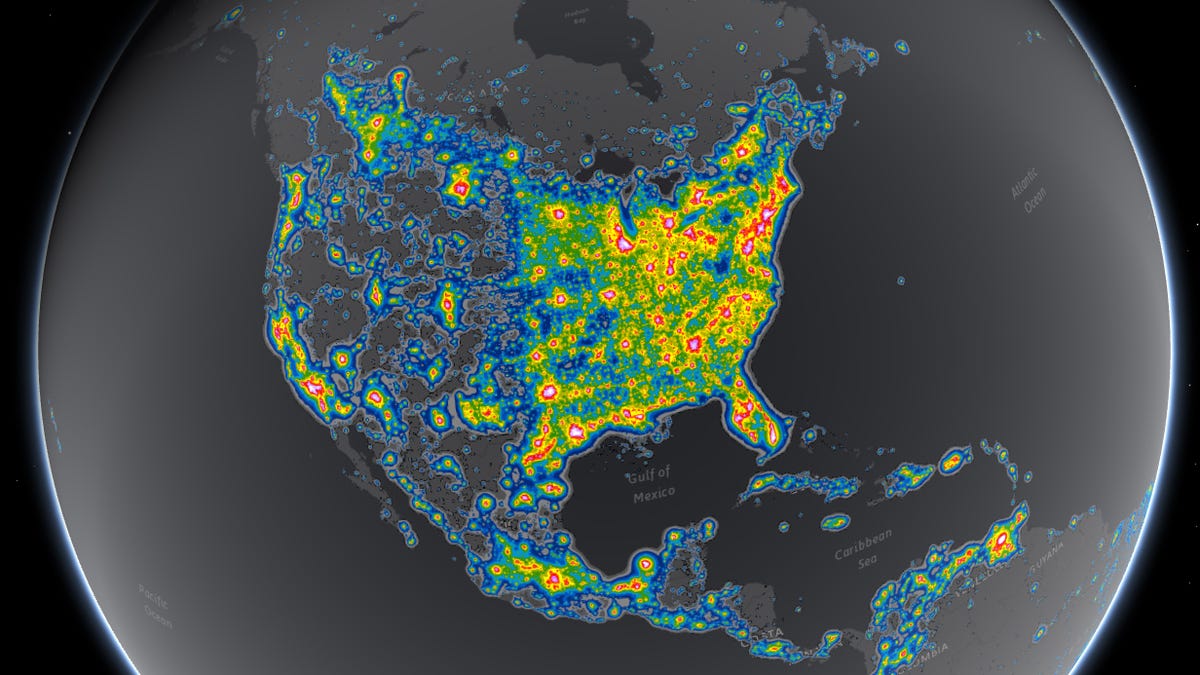Light pollution hides the Milky Way from a third of all humans
Artificial light is a wonderful thing for many reasons, but it's obscuring the night sky for large swaths of humanity.
The Milky Way has dominated the night sky for as long as there has been a night sky. Yet for a third of humanity, it's obscured by fog of light, caused by the artificial illumination used at night in towns and cities. And for Americans, it's even worse: Around 80 percent of the country can't see the Milky Way at night.
"We've got whole generations of people in the United States who have never seen the Milky Way," said Chris Elvidge, a scientist with NOAA's National Centers for Environmental, who co-authored an update of a global atlas of light published in the journal Science Advances. "It's a big part of our connection to the cosmos -- and it's been lost."
Light pollution can also harm wildlife, which can become disoriented by the artificial light.
The team used satellite data and sky brightness measurements to build the atlas. They discovered that it's most prevalent in Singapore, Italy and South Korea, while Canada and Australia are the darkest (although it's worth noting that most of Australia's population is concentrated around its edges). You can play with an interactive map to find out how heavily your home is light polluted here.


